
The Transformation of Our Bodies and Diets
In the 1970s, a visit to the beach was a showcase of lean, active bodies. People of all ages enjoyed the sun, surf, and sand with a level of fitness that seemed effortless. Fast forward to today, and the scene has drastically changed. The prevalence of overweight and obese individuals has skyrocketed, painting a stark contrast to the svelte figures of the past. This shift prompts us to examine the role of the food industry in this dramatic transformation.

The 1970s: A Different Era of Eating
During the 70s, the typical diet was markedly different from what we see today. Meals were often home-cooked, with fresh ingredients forming the backbone of family dinners. Processed foods were available but not ubiquitous. Fast food chains were fewer, and eating out was considered a treat rather than a regular occurrence. Portion sizes were smaller, and sugary snacks were less prevalent in households.
Physical activity also played a significant role in the lives of people in the 70s. Without the convenience of digital entertainment, children and adults alike spent more time outdoors, engaging in physical activities. Walking, cycling, and participating in sports were common pastimes.
The Rise of Processed Foods
The landscape began to change with the rise of processed foods and fast food chains in the late 20th century. The food industry, driven by profit, began to prioritize convenience and shelf-life over nutritional value. High-fructose corn syrup, hydrogenated oils, and an array of artificial additives became staples in many foods. These ingredients made food cheaper and more accessible but also less healthy.
Marketing strategies targeted at children and busy adults further entrenched these unhealthy eating habits. Fast food advertisements promised quick, tasty meals at low prices, and snack companies created products that were hard to resist due to their high sugar and salt content. This aggressive marketing, combined with the convenience of ready-made meals, led to a significant increase in the consumption of unhealthy foods.
The Impact on Public Health
The consequences of these changes in diet have been profound. Rates of obesity have soared, bringing with them a host of health problems, including diabetes, heart disease, and various forms of cancer. According to the World Health Organization, worldwide obesity has nearly tripled since 1975. In many countries, the number of overweight children and adolescents has increased tenfold over the same period.
The food industry’s influence extends beyond what we eat to how we perceive food. Portion sizes have increased dramatically, and the notion of what constitutes a normal serving has become distorted. Additionally, the emphasis on convenience has led to a decline in cooking skills, with many people relying heavily on pre-packaged meals and fast food.
Moving Towards a Healthier Future
Addressing this issue requires a multifaceted approach. Public awareness campaigns can educate people about the dangers of processed foods and the benefits of a balanced diet. Governments can implement policies to regulate the marketing of unhealthy foods, particularly to children, and promote healthier options. Schools can play a crucial role by providing nutritious meals and incorporating nutrition education into their curricula.
On an individual level, making a conscious effort to prepare meals from fresh ingredients, controlling portion sizes, and increasing physical activity can help counteract the damage done by the food industry. Embracing a lifestyle reminiscent of the 70s, where home-cooked meals and outdoor activities were the norm, can pave the way towards a healthier society.
At 62, This TV Star is Turning Heads – Check Out Her Stunning Transformation
This glamorous TV star has had a life filled with ups and downs, including a successful career, a famous divorce, and finding love again in her 60s. Let’s take a closer look at her journey and stunning change over the years.
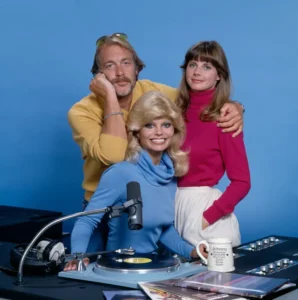
This well-known television star first caught the public’s eye in the late 1970s with her breakout role as the stylish and clever secretary Jennifer Marlowe on “WKRP in Cincinnati.” Her mix of beauty and great comedic timing made her an instant hit, but her rise to fame didn’t happen overnight. Before she became the blonde bombshell known by millions, she had a simple upbringing in Saint Paul, Minnesota.
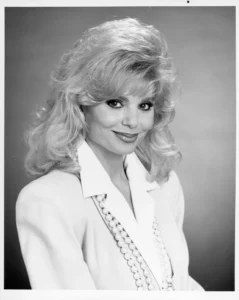
Born in 1945 to a chemist father, she had jet-black hair as a child. She studied art at the University of Minnesota, but her stunning looks helped her win spots in beauty pageants, even finishing as a runner-up in the Miss Minnesota contest in 1964.

Her early life was marked by challenges, including a marriage and divorce before she turned 21. She took on a teaching job to support herself and her daughter while finishing her college degree.
She grew interested in acting through local theater productions, performing in plays like “Fiddler on the Roof,” “Born Yesterday,” and “The Threepenny Opera.” Determined to pursue acting more seriously, she and her second husband, actor Ross Bickell, moved to Los Angeles in the mid-1970s.
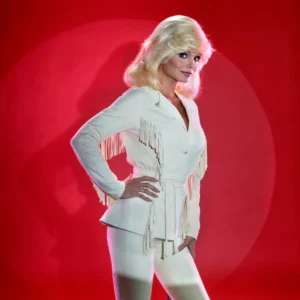
After landing small roles in popular shows like “S.W.A.T.” and “The Bob Newhart Show,” her career began to grow. However, her choice to dye her hair blonde truly pushed her into the spotlight.
In 1978, she got her role on “WKRP in Cincinnati,” earning two Emmy nominations. While she was doing well professionally, her second marriage ended in 1981, partly due to the pressures of her rising fame.

Her success on “WKRP in Cincinnati” opened doors for more roles, leading her to portray real-life Hollywood figures like Jayne Mansfield in “The Jayne Mansfield Story” and Thelma Todd in “White Hot: The Mysterious Murder of Thelma Todd.”
Although she showed her dramatic skills, she was often seen as a glamorous Hollywood star. Still, her roles kept her popular and confirmed her status in the television industry.

In the early 1980s, she started a high-profile relationship with Burt Reynolds, one of Hollywood’s biggest stars. They were often seen on red carpets and magazine covers, becoming a glamorous couple. After dating for six years, they married in a small but public ceremony in 1988.
Their wedding took place at Reynolds’ Florida ranch and attracted much media attention, with helicopters overhead and paparazzi waiting outside.

Although their relationship looked perfect to the public, problems arose behind the scenes. Just five years after their wedding, Reynolds served her divorce papers.
Their separation became famous, with tabloids reporting accusations of infidelity, bad parenting, and financial issues. Reynolds claimed she maxed out his credit cards and said she had been unfaithful.

In 1995, she accused Reynolds of being violent. Their divorce was messy and took years to finalize, with their financial ties lingering for over two decades.
Despite the difficult end to their marriage, the actress later looked back on their relationship positively. In an interview after Reynolds died in 2018, she said they reconciled before he passed away.
“We were friends first and friends last. It’s time to move on,” she stated. Their adopted son, Quinton, played a key role in their eventual reconciliation.
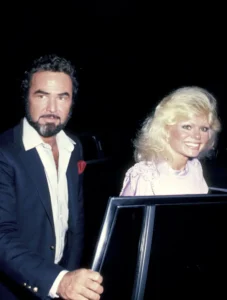
“We have this wonderful child together. Having a son was a big event in our lives, and everything revolved around him,” she explained. Their son even brought them together one last time before Reynolds died.
In a final kind gesture, Reynolds took her out to dinner and brought her flowers. She cherished these memories, speaking fondly of her ex-husband’s gentle side.
While her tumultuous relationship with Reynolds was the focus of many headlines in the 1990s, the actress remained committed to her career. She continued to work in television, often appearing in sitcoms and TV movies, although her roles often reflected the glamorous image she built in the 1980s.

In 2008, at 62, she found love again, this time in a quieter setting. She married Bob Flick, a musician and founding member of The Brothers Four, a folk group.
Their relationship had deep roots, as they first met decades earlier at a movie premiere when her career was just beginning. After reconnecting later in life, they wed in a private ceremony attended by close family and friends, including her son.
This beloved figure in Hollywood is none other than Loni Anderson, now 79. Take a look at the actress’s transformation over the years as she embraced life in the spotlight.


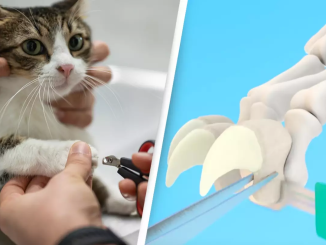
Leave a Reply